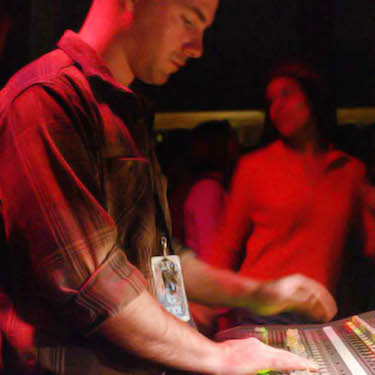|

Although Andy Torri enrolled at a Colorado music school in the late 1980s to carefully prepare himself for a life in the world of professional audio, it was a chance meeting at a local bar that held his destiny. Mutual friends introduced Torri to Todd Park Mohr, frontman for the rising act, Big Head Todd & the Monsters. The two became friends, and shortly after Torri found himself at another bar, complaining to Mohr about how hard it was to find sound engineering work in the studios around Colorado. He expected only friendly commiseration, but got a job offer instead.
Since then, Torri has had only two main jobs: FOH engineer for Big Head Todd & the Monsters and studio engineer at KBCO in Boulder. The first gig, from which he took only a short reprieve between 2005 and 2012, took him from guitar-tuning-tee-shirt-sales-plus-mixing-duties in the smoky haze of local bars to his current position of respected FOH engineer at venues of all sizes around the Intermountain West and the nation. At KBCO, Torri engineered in-studio performances by Sting, Coldplay, Stevie Nicks, Dave Matthews, Jack Johnson, Elvis Costello, Willie Nelson, Robert Plant, and countless others. Most of those recordings found their way to KBCO’s wildly popular Studio C Session CDs, the proceeds of which went to charity.
Torri is one of those engineers who trained in the analog world and then successfully navigated the hills, valleys, and occasional rock slides to the state-of-the-art-hybrid digital/analog world that we currently live in. As he personally navigated that transition, he accumulated digital solutions from Metric Halo, and once he grabbed them, he never let them go! The first of those solutions was Metric Halo’s SpectraFoo sound analysis software. “It’s been a constant for me, both live and in the studio,” Torri said. “I love its flexibility. It’s easy to create custom pages of all the tools I need for a particular job. I also love the precision of those tools. I can zoom in or out on frequency, amplitude, or any other parameter and get as much detail or overview as I need.”
Big Head Todd & the Monsters play everything from clubs to theaters to amphitheaters, and the span between load-in and show-time is seldom ample. “We use in-house console and PA system,” Torri explained. “Every day is different, and every system has its own particular quirks.” Using his Metric Halo 2882 interface, Torri takes a feed from the board and compares it with output from a measurement microphone. He continued, “I use the Spectragraph and Spectragram a lot. They immediately reveal the hot spots and trouble areas of a particular system. After correcting those problems, I balance the system using SpectraFoo and some combination of pink noise and my own personal favorite ‘sound engineer songs.’”
Occasionally, Torri will find himself at a venue with sufficient outboard or console-based processing that he can dial in Todd’s voice and the rest of the mix using it. That’s the exception however, and he usually relies on the 2882’s DSP resources and his Metric Halo MIOStrip plug-in. “In addition to getting sound into SpectraFoo, I use the 2882 and MIOStrip to dial in the vocals,” Torri said. “I often use them on bass and/or the house mix as well. The Metric Halo system is rock solid, so I’m comfortable using it live. And it sounds fantastic. A while back, I mixed down some greatest hits tracks using every method of summing that was available to me, including using the 2882’s 80-bit summing. I gave the mixes to the mastering engineer without telling him what all the different codes stood for – it was a blind test. Every time, he chose the 2882 summing. It has a depth and definition to the panning and a warm, solid low end.”
Much like SpectraFoo and the 2882, Torri finds Metric Halo’s MIOStrip to be a tool for all occasions. “MIOStrip has a great sound, which is obviously very important,” he said. “The functionality is great; cuts and gains can be very subtle or very aggressive.” For vocals and instruments, Torri often pairs MIOStrip with the 2882’s “Character” processing, which models different flavors of analog circuits. He usually uses “Soft Sat.”
“Working with Metric Halo has been about more than just the gear,” Torri concluded. “The people behind the company are great. They create great products and stand behind them: SpectraFoo is seventeen years old, and the 2882 is twelve years old. It’s all well supported, updated, and totally relevant. What other company can say that?” |